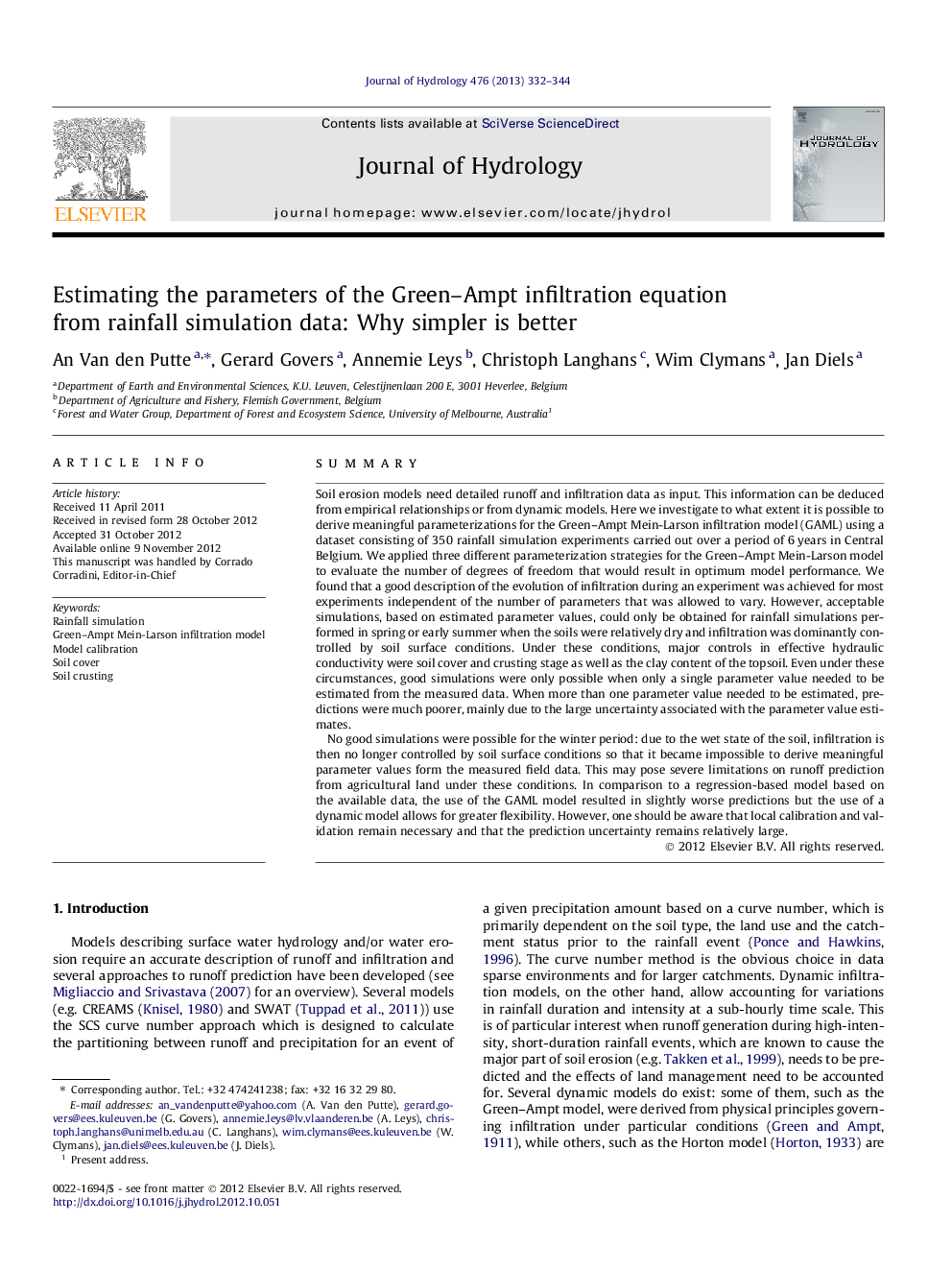| کد مقاله | کد نشریه | سال انتشار | مقاله انگلیسی | نسخه تمام متن |
|---|---|---|---|---|
| 4576623 | 1629972 | 2013 | 13 صفحه PDF | دانلود رایگان |

SummarySoil erosion models need detailed runoff and infiltration data as input. This information can be deduced from empirical relationships or from dynamic models. Here we investigate to what extent it is possible to derive meaningful parameterizations for the Green–Ampt Mein-Larson infiltration model (GAML) using a dataset consisting of 350 rainfall simulation experiments carried out over a period of 6 years in Central Belgium. We applied three different parameterization strategies for the Green–Ampt Mein-Larson model to evaluate the number of degrees of freedom that would result in optimum model performance. We found that a good description of the evolution of infiltration during an experiment was achieved for most experiments independent of the number of parameters that was allowed to vary. However, acceptable simulations, based on estimated parameter values, could only be obtained for rainfall simulations performed in spring or early summer when the soils were relatively dry and infiltration was dominantly controlled by soil surface conditions. Under these conditions, major controls in effective hydraulic conductivity were soil cover and crusting stage as well as the clay content of the topsoil. Even under these circumstances, good simulations were only possible when only a single parameter value needed to be estimated from the measured data. When more than one parameter value needed to be estimated, predictions were much poorer, mainly due to the large uncertainty associated with the parameter value estimates.No good simulations were possible for the winter period: due to the wet state of the soil, infiltration is then no longer controlled by soil surface conditions so that it became impossible to derive meaningful parameter values form the measured field data. This may pose severe limitations on runoff prediction from agricultural land under these conditions. In comparison to a regression-based model based on the available data, the use of the GAML model resulted in slightly worse predictions but the use of a dynamic model allows for greater flexibility. However, one should be aware that local calibration and validation remain necessary and that the prediction uncertainty remains relatively large.
► Predicting runoff generation on arable land remains difficult.
► Variability in runoff generation under winter crops is also controlled by subsoil properties.
► Best predictions are obtained with a single parameter version of the GA model.
► Uncertainties in parameter prediction overwhelm possible gains in predictive capability when more than one parameter is used.
► The GA model results in a limited loss of predictive capability compared to an empirical approach.
Journal: Journal of Hydrology - Volume 476, 7 January 2013, Pages 332–344